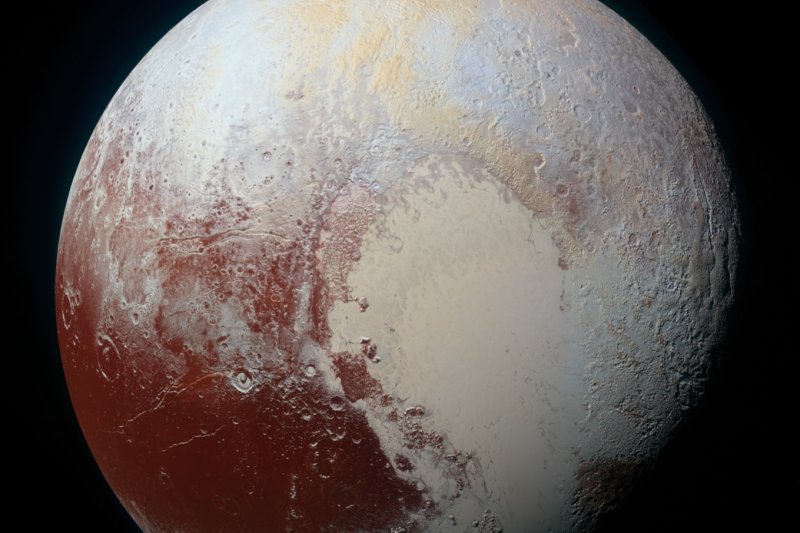The new definition wouldn't change the classification of Pluto. Photo by NASA/JHUAPL/SwRI
NATIONAL HARBOR, Md., Nov. 10 (UPI) -- Jean-Luc Margot, a professor of planetary astronomy at UCLA, wants to simplify the official definition of a planet, making it easier to classify the thousands of objects scientists have discovered orbiting stars other than the sun.
The International Astronomical Union offers a definition only for planets within our solar system, leaving exoplanets in a "definitional limbo."
The IAU's litmus test for classification as a planet asks a seemingly simple question: Can the object clear its orbit? More specifically, can a orbital body evacuate, accumulate or dominate smaller bodies within the vicinity of its orbital path?
Margot has devised a new and simple test to answer that question. His formula only requires estimates of the candidate's orbital period, as well as the mass of both the candidate and its host star. All these estimates can be calculated using both Earthbound and space-based observatories.
If adopted, the formula would classify all eight of the solar system's planets, as well as 99 percent of all exoplanets, as certifiable planets. Astronomers have identified some 5,000 exoplanets.
Margot presented his proposed definition and formula on Tuesday at the American Astronomical Society's Division for Planetary Sciences meeting being held this week in National Harbor, Md.
Those who'd like to see Pluto reclassified as a planet, Margot's proposal is likely to disappoint. Under his parameters, dwarf planets like Ceres, Pluto and Eris would fail to pass the litmus test.
"The disparity between planets and non-planets is striking," Margot said in a press release. "The sharp distinction suggests that there is a fundamental difference in how these bodies formed, and the mere act of classifying them reveals something profound about nature."
His analysis also revealed most qualifying planets to be sufficiently spherical.
"When a body has sufficient mass to clear its orbital neighborhood, it also has sufficient mass to overcome material strength and pull itself into a nearly round shape," he added.















